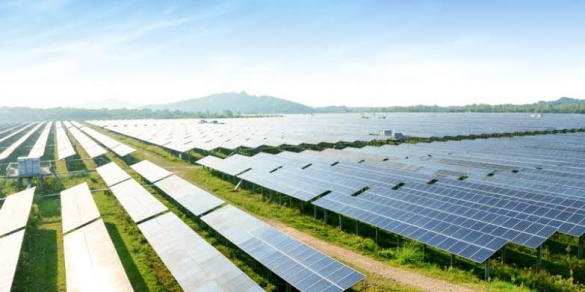Countries in the Middle East and North Africa (MENA) region have ramped up their solar energy output by 23% year-over-year in 2023, with Egypt leading the way in solar initiatives, according to the Middle East Solar Industry Association’s (MESIA) 2024 Solar Outlook Report. The report indicates that solar power is increasingly becoming a fundamental part of the energy strategies in these countries.
The push toward renewable energy sources comes amid rising industrialization, population growth, and economic development, alongside growing concerns about climate change and environmental sustainability. The MENA region boasts some of the highest levels of solar energy potential globally, with an average annual solar irradiance exceeding 2,000 kWh per square meter, with countries like Saudi Arabia, the United Arab Emirates, Morocco, and Egypt leading in solar capacity.
In 2023, Egypt and Morocco were noted for their significant investment in large-scale solar projects. Egypt hosted COP27 and has been enhancing its shift to renewables and green hydrogen, with ambitions to reach a 42% share of renewable generation by 2030, targeting nearly 27% from solar alone—a substantial increase from today’s 2.5%. Morocco is aiming for a 52% renewable capacity by 2030, with solar comprising 20%, up from 8% currently.
Significant projects like Morocco’s Noor and Egypt’s Benban solar farms are among the largest globally. These projects are expected to collectively add nearly 35 gigawatts of solar by 2030, driven by key players like AMEA Power, ACWA Power, Scatec, Egypt’s New and Renewable Energy Authority (NREA), and the Moroccan Agency for Sustainable Energy (MASEN).
Moreover, the solar sector is critical to transforming Egypt and Morocco into major hubs for renewable energy and green hydrogen. This includes involvement in large-scale green hydrogen projects and interconnector projects like the 3.6 GW Xlinks UK-Morocco and the 3 GW GREGY interconnector.
Algeria and Tunisia are also making strides in expanding their solar capacities. Algeria launched a 2 GW solar tender in February 2023, involving the construction of 15 solar PV projects across 12 regions, aiming for 15 GW of solar capacity by 2035. Tunisia has initiated two tenders for 1 GW of solar PV, with additional plans to add another 2.2 GW, aiming to achieve 35% renewable capacity by 2035.
In Libya, the government’s focus on solar energy is seen as a hopeful development amidst the country’s electricity crisis. Libya experiences a daily electricity shortfall of about 2,500 MW, prompting reliance on diesel generators. However, its favorable location within the Sunbelt offers immense solar potential, encouraging the adoption of solar systems, especially in the commercial, industrial, and agricultural sectors.
In Morocco, the renewable energy sector saw a considerable boost in investment, aiming to fund the completion of approximately 1.3 GW of renewable energy capacity annually from 2023 to 2027—a significant increase from previous years. This investment has already resulted in the licensing of new renewable energy projects with a capacity of around 1,000 MW in a single year, marking a substantial achievement for the country.
The MENA region’s focus on solar energy not only supports the global shift toward sustainable energy but also positions it as a key player in the future of renewable energy and green hydrogen production. This transition is critical as these nations strive to meet their ambitious renewable energy targets and reduce their reliance on fossil fuels, offering a blueprint for other regions aiming for energy transformation.
Source: ESI Africa



